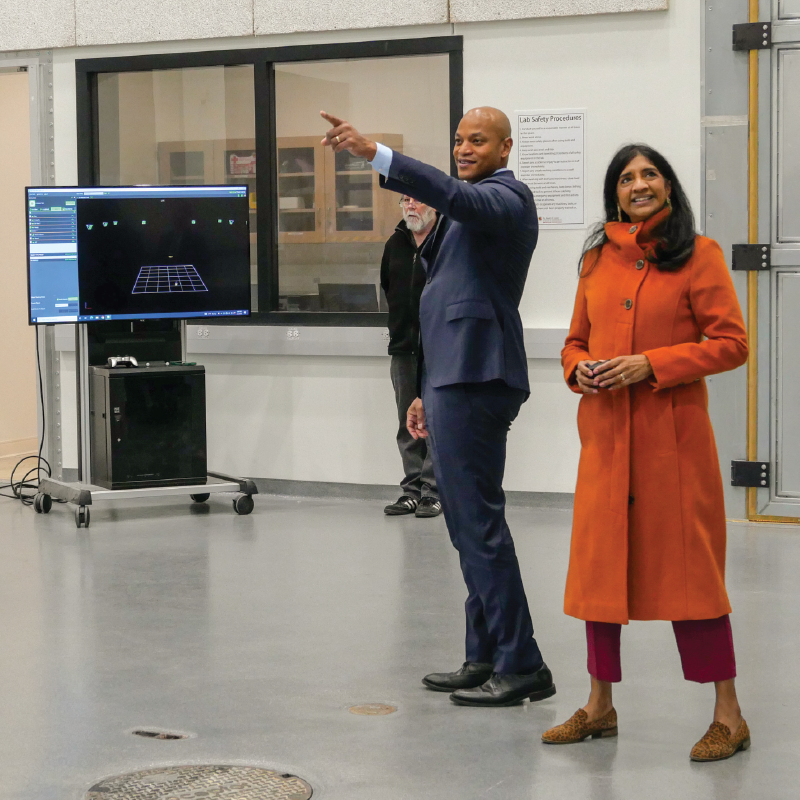News Story
Minimally Invasive Neurosurgical Intracranial Robot (ISR IP)
For more information, contact ISR External Relations Director
Jeff Coriale at coriale@umd.edu or 301.405.6604.
Inventors: Jaydev Desai, Marc Simard, Satyandra Gupta, Rao Gullapalli, Nicholas Pappafotis, Wojciech Bejgerowski
Description
Brain tumors, which occur in 20-40% of adult cancer patients, are among the most feared complications of the disease. Despite numerous advances in treatment, the prognosis for these patients is poor, with a median survival of 4-8 months. The primary reasons for the poor survival rate are the lack of good continuous imaging modality for intraoperative intracranial procedures and the inability to remove the complete tumor tissue due to its placement in the brain and the corresponding space constraints to reach it. Intraoperative magnetic resonance imaging (MRI) supplements the surgeon’s visual and tactical senses in a way that no other imaging device has achieved, resulting in less trauma to surrounding healthy brain tissue during surgery. To minimize the trauma to surrounding healthy brain tissue, it would be beneficial to operate through a narrow surgical corridor dissected by a neurosurgeon.
Researchers at the University of Maryland, in conjunction with researchers at the University of Maryland School of Medicine, Baltimore, have invented a robot that would allow a neurosurgeon to resect brain tumors and other intracranial masses in human patients in a minimally invasive manner while the patient is actively undergoing brain imaging. This invention comprises a highly dexterous robot capable of removing intracranial tumors and masses while operating through an extremely narrow corridor in the brain, thus producing minimal disturbance or damage to normal brain tissues. Unique features include:
• Sufficiently small size to allow resective neurosurgery to proceed while the patient’s brain is imaged
• Fabrication of materials that are entirely compatible with the imaging modality
• A virtual interface between imaging modality and robot that precludes the neurosurgeon from having to directly visualize the tumor or mass during resection, allowing the direct control of the neurosurgeon guided by imaging modality
• Ability to manipulate instruments required to destroy tissues, including but not limited to monopolar and bipolar electrocautery, laser, radio-frequency ablator and ultrasonic cavitator
• Ability to manipulate instruments required to remove tissue debris, including irrigation and suction
For more information
If you would like to license this intellectual property, have questions, would like to contact the inventors, or need more information, contact ISR External Relations Director Jeff Coriale at coriale@umd.edu or 301.405.6604.
Find more ISR IP
You can go to our main IP search page to search by research category or faculty name. Or view the entire list of available IP on our complete IP listing page.
ISR-IP-Gupta ISR-IP-nano ISR-IP-microrobotics ISR-IP-medicine
Published June 23, 2007









